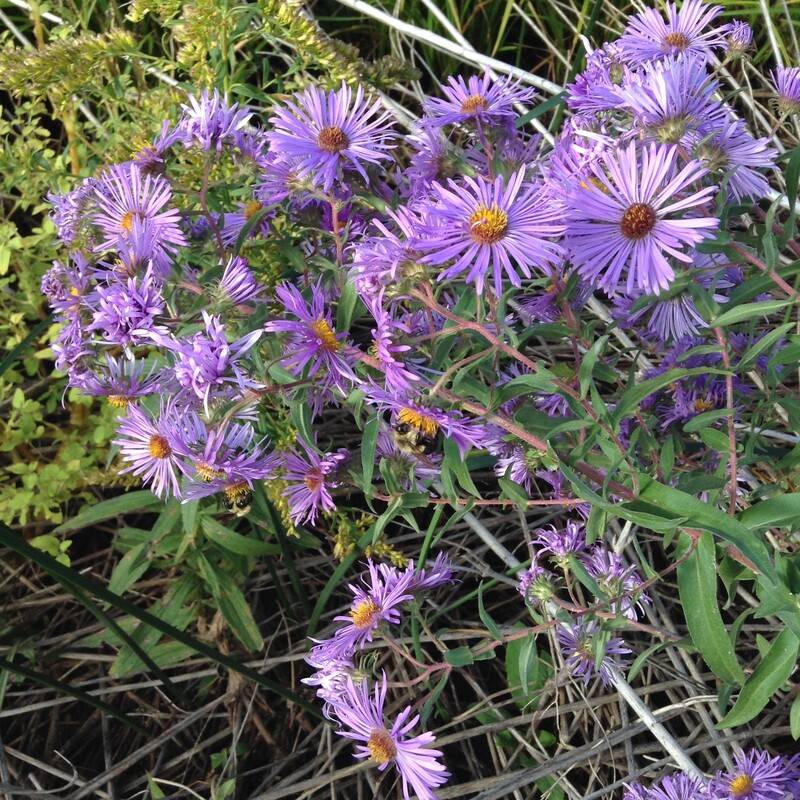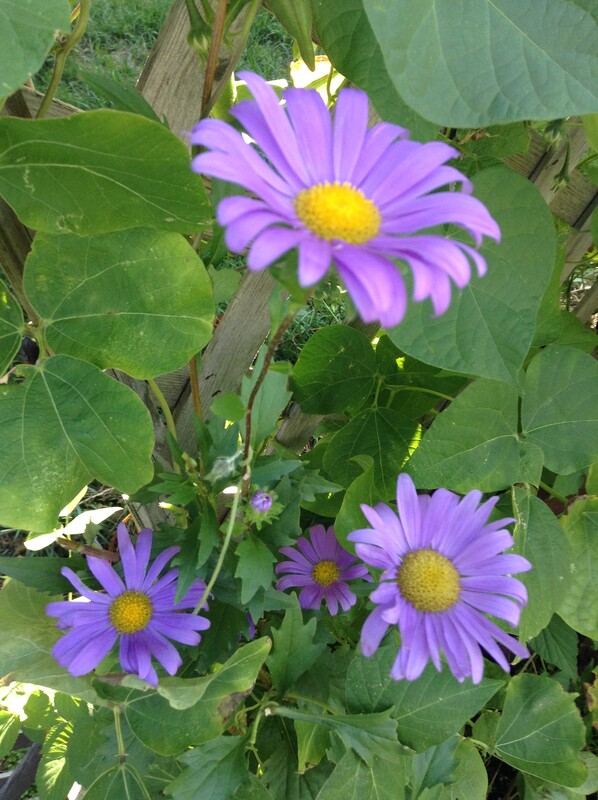|
Story and photos by Donna Iverson
Something about plants with purple flowers have always attracted me ...whether it's a wildflower, like purple trillium; a weed-like creeping bellflower or a spring-flowering bush, like lilac. About this time in late summer, it's New England Aster that catches my eye as it has escaped to the wild and can be found in the most unlikely places. Of course, I love the cultivated variety of aster too, especially when it appears in my garden bed unexpectedly like the one pictured here. I imagine it's seeds blowing in the wind and steering their way to my community garden bed. But my first love when it comes to asters, is the native New England Aster. This year, I found it flowering along the Lakeshore Bike Trail which follows an abandoned railroad track. New England aster signals that fall is near, along with goldenrod and the ubiquitous chrysanthemum. Although it is a wild native plant, you can grow New England Aster in your garden. Like most native plants, it is drought resistant and can tolerate less than fertile soil. Plant it in full sun if possible. While you can start it from seed, it is probably best to buy small plants from your farmers market or plant nursery. Seeds can take up to three years to produce flowers. It would be at home in a wildflower garden, rock garden, border or even a formal garden as an accent plant. Deer avoid it and it isn't toxic to horses or dogs, although it is poisonous to cats, so probably not the best plant to grow if you have felines. As for pollinators, New England Aster is a winner in this category too. It attracts butterflies including the Monarch, bees and goldfinch who eat the seed. Often it is the last flowering plant of the growing season, providing much-needed nectar for pollinators and a burst of color before winter sets in. Checking on its range, it turns out to be winter-hardy in lower Michigan and is found throughout New England, the Midwest and even the Southwest. Foragers seek out New England Aster as it is leaves and flowers are edible, They can be added to salads or brewed into tea. And again, the Native Americans are ahead of us on this, harvesting New England Aster as a food crop hundreds of years ago. Other cultivated plants in the aster family include marigolds, chrysanthemums, calendula, and zinnias. In fact, the aster family is the largest family of flowering plants in the northern latitudes. In ancient times, it was considered an enchanted flower and it scent was believed to drive away evil serpents. Yes, serpents. Aster is also the talisman of love and symbol of patience. For those of you born in September, it is your birth flower.
0 Comments
Your comment will be posted after it is approved.
Leave a Reply. |
Archives
April 2024
Categories |


 RSS Feed
RSS Feed